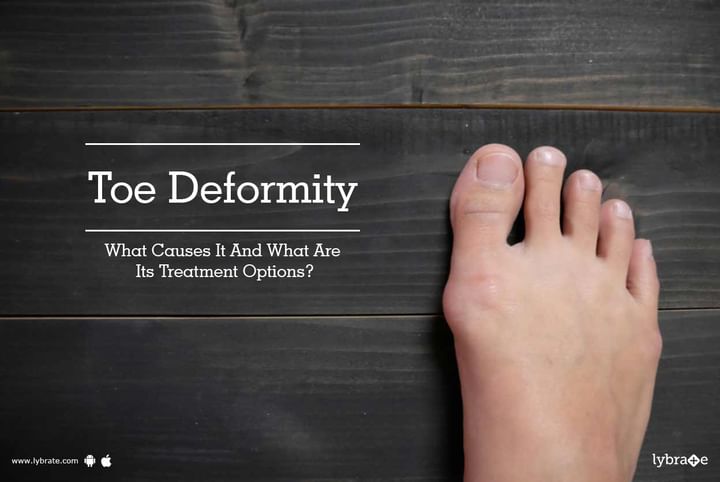Toe Deformity- What Causes It And What Are Its Treatment Options?
Have you ever come across a person with usual toes, toes that are mysteriously curled or bend upwards, downwards or inwards? As strange and intriguing as it may appear, the condition can be quite painful and is known as toe deformity. In toe deformity, the foot bone is unusually and abnormally positioned, resulting in pain and discomfort.
Toe deformity in a person can be of different types. It can be:
- Hammer toe: This is one of the most commonly observed toe deformity. A hammer toe is characterized by the curling or bending down of the second toe at the proximal interphalangeal joint (the middle toe joint). The toe may further bend up at the distal interphalangeal joint (joint adjacent to the toe tip) or the metatarsophalangeal joint (meeting point of the foot and the toe) as well. In hammer toe, the awkward alignment results in a slight elevation in the joint of the middle toe. A hammer toe is often seen accompanied by a bunion (a bony bump or a deformity formed at the joint that links the foot with the big toe).
- Mallet toe: Mallet toe mostly affects the second toe (other toes may be affected). The deformity results in bending down of the toe at the distal interphalangeal joint (appears like a mallet).
- Claw toe: The deformity affects all the toes, with the big toe being an exception. Here, the toes bend up at the metatarsophalangeal joint and bend down at the distal interphalangeal joint. The deformity results in the toes curling down towards the floor (appears claw-like).
What causes Toe Deformity?
There can be many factors responsible for toe deformities.
- Toe deformity in a person may be congenital (present from birth).
- It can also be an outcome of medical conditions such as arthritis (osteoarthritis, rheumatoid arthritis), stroke, heart attack, diabetes, an injury, an accident, or wearing wrong footwear.
- Toe deformity can also be hereditary.
Signs and symptoms:
The symptoms for Toe Deformity (hammer toe, claw toe, and mallet toe) include
- There is redness, pain, and swelling in the affected part of the toe. In claw toe, however, there may or may not be pain associated with the condition.
- A person faces difficulties in straightening the toe.
- In hammer toe, corns, and calluses appear on the middle joint (top) of the affected toe.
- In mallet toe, ulcers may occur on the toe (in diabetic patients).
Treatment:
Initially, toe deformity appears flexible, where movement around the affected joint is possible. However, if left unattended, the condition can become severe and rigid, thereby restricting the movement (in the affected area). Treatment for toe deformity depends on how severe the condition is.
- In most cases, the treatment involves wearing custom-made shoes, fitted with supports (cushions or pads) and wider toe box.
- Using of tapes and splints may be helpful in correcting and repositioning the deformed toe.
- Patients with excruciating pain benefit immensely from cortisone injections.
- Corn pads can be used to deal with corns and calluses better.
- Toe stretching exercises are highly effective.
If severe cases or extreme rigidity, doctors may opt for surgical treatments like arthrodesis, tendon transfer, arthroplasty, to name a few. If you wish to discuss about any specific problem, you can consult an Orthopedist.



+1.svg)
